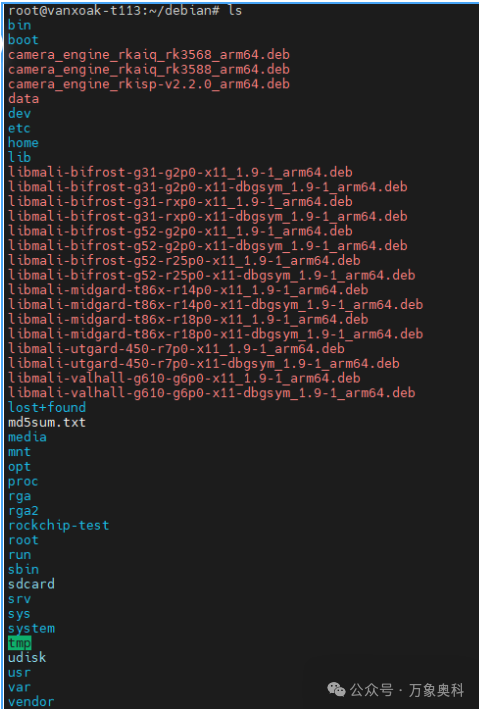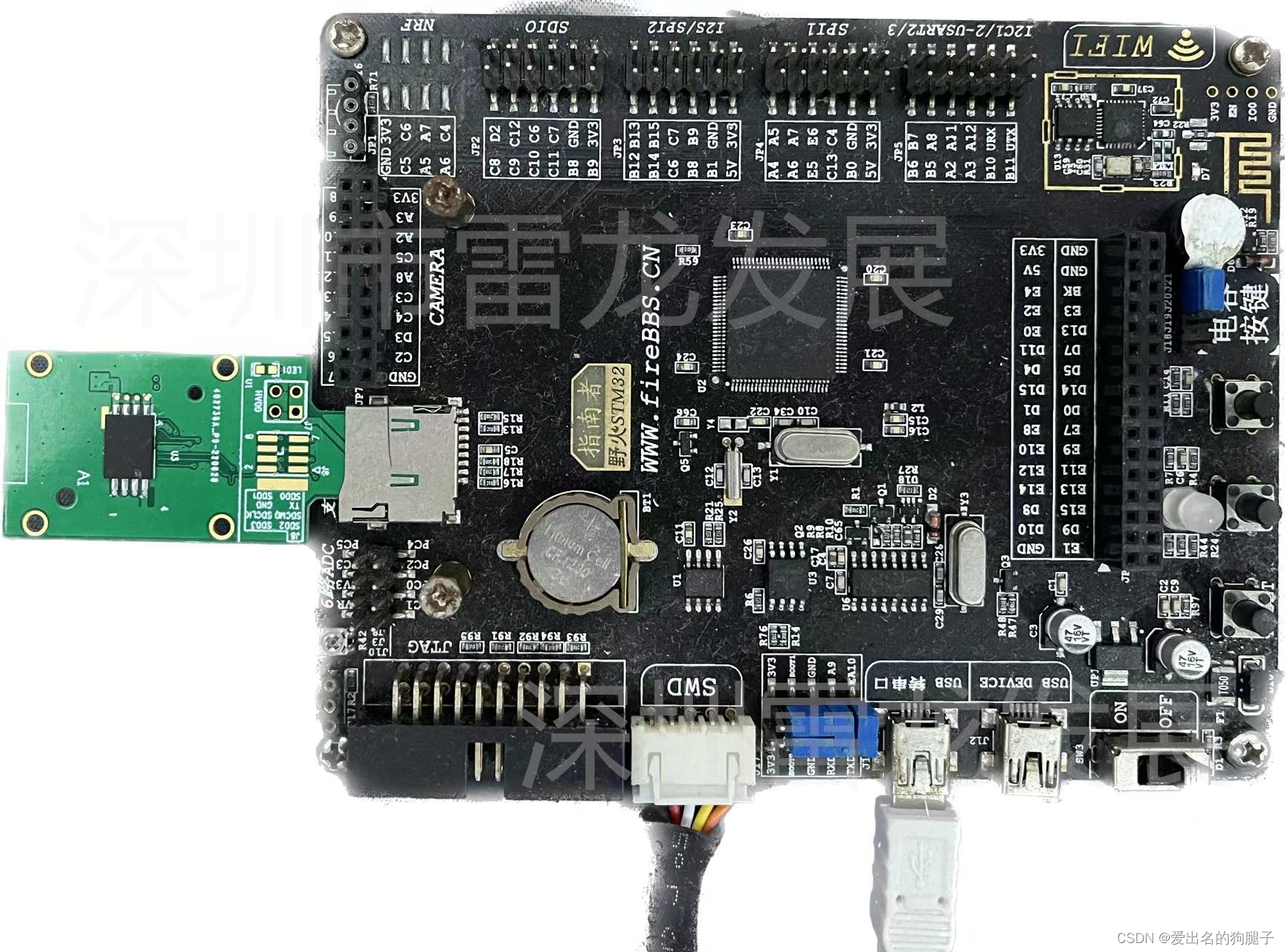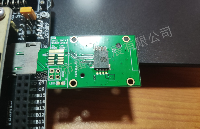一、简介
LittleFS是一个小型的Flash文件系统,它结合日志结构(log-structured)文件系统和COW(copy-on-write)文件系统的思想,以日志结构存储元数据,以COW结构存储数据。这种特殊的存储方式,使LittleFS具有强大的掉电恢复能力(power-loss resilience)。分配COW数据块时LittleFS采用了名为统计损耗均衡的动态损耗均衡算法,使Flash设备的寿命得到有效保障。同时LittleFS针对资源紧缺的小型设备进行设计,具有极其有限的ROM和RAM占用,并且所有RAM的使用都通过一个可配置的固定大小缓冲区进行分配,不会随文件系统的扩大占据更多的系统资源。当在一个资源非常紧缺的小型设备上,寻找一个具有掉电恢复能力并支持损耗均衡的Flash文件系统时,LittleFS是一个比较好的选择。
LittleFS在嵌入式开发过程中经常遇到,但是如何在OpenHarmony中使用呢?本文基于OpenHarmony 3.1Release + 小凌派-RK2206开发板做LittleFS文件系统移植,现将相关移植经验发布,分享给大家。文中如有问题,请大家帮忙指正。
二、LittleFS移植过程
本文基于OpenHarmony3.1Release做LittleFS移植,小凌派-RK2206开发板内部Flash有8MB大小,其中4~8MB区间为空闲区域。我将4M~5M作为LittleFS文件系统的/data目录挂载硬件设备。具体移植过程主要如下所示:
1、hcs配置
1.1、hdf.hcs
创建/device/soc/rockchip/rk2206/hcs_config/hdf.hcs文件,具体如下:
#include "device_info/device_info.hcs"#include "fs/fs_config.hcs"#include "gpio/gpio_config.hcs"#include "i2c/i2c_config.hcs"#include "spi/spi_config.hcs"root { module = "rockchip,rk2206_chip";}
如上所述,我将在device_info/device_info.hcs添加LittleFS设备,并在fs/fs_config.hcs添加LittleFS具体信息。
1.2、BUILD.gn
新建//device/soc/rockchip/rk2206/hdf_config/BUILD.gn,具体代码如下所示:
import("//drivers/adapter/khdf/liteos_m/hdf.gni")module_switch = defined(LOSCFG_DRIVERS_HDF)module_name = get_path_info(rebase_path("."), "name")hdf_driver(module_name) { hcs_sources = [ "hdf.hcs" ]}
上述代码将在编译OpenHarmony3.1Rlease时,将编译hdf.hcs。
1.3、device_info.hcs
创建/device/soc/rockchip/rk2206/hcs_config/device_info/device_info.hcs文件,在文件中添加LittleFS设备,具体代码如下所示:
device_fs :: device { device0 :: deviceNode { policy = 0; priority = 5; permission = 0777; moduleName = "HDF_PLATFORM_FS_LITTLEFS"; serviceName = "littlefs_config"; deviceMatchAttr = "rockchip_rk2206_fs_littlefs"; } }
上述代码表示建设一个设备驱动,该驱动的模块名称(即moduleName)为“HDF_PLATFORM_FS_LITTLEFS”,OpenHamrony系统依据该名称匹配驱动程序;设备匹配信息(即deviceMatchAttr)添加小凌派开发板Flash特殊信息(比如:分区信息,挂载目录名、起始地址、结束地址等)。
1.4、fs_config.hcs
新建//device/soc/rockchip/rk2206/hdf_config/fs/fs_config.hcs文件,该文件主要写清楚设备挂载信息,具体如下:
root { platform { fs_config { template fs_controller { match_attr = ""; mount_points = []; block_size = []; block_start = []; block_count = []; }
fs_littefs :: fs_controller { match_attr = "rockchip_rk2206_fs_littlefs"; mount_points = ["/data"]; block_size = [4096]; block_start = [1024]; block_count = [256]; } } }}
如上所述,我将LittleFS移植所需的Flash信息分为4个:
(1)mount_points:挂载目录。
(2)block_size:Flash的擦除块大小。
(3)block_start:该挂载Flash区域的起始块地址,实际Flash地址为block_size * block_start。
(4)block_count:该挂载Flash区域的存储块总数。
注意:match_attr所表示的字符串要与device_info.hcs所表示的字符串要一致。
2、hdf驱动
新建//device/soc/rockchip/rk2206/hdf_driver/fs文件夹,文件夹下创建2个文件,具体如下所示:
2.1、fs_driver.c
2.1.1、添加必要的头文件
#include#include#include "los_config.h"#include "hdf_log.h"#include "hdf_device_desc.h"#include "device_resource_if.h"#include "osal_mem.h"#include "lfs_api.h"
2.1.2、添加HDF驱动
添加LittleFS匹配的hdf驱动,具体代码如下所示:
static struct HdfDriverEntry g_fsDriverEntry = { .moduleVersion = 1, .moduleName = "HDF_PLATFORM_FS_LITTLEFS", .Bind = fs_driver_bind, .Init = fs_driver_init, .Release = fs_driver_release,};
HDF_INIT(g_fsDriverEntry);
其中,moduleName必须要与device_info.hcs中的moduleName保持一致。
2.1.3、fs_driver_init函数
fs_driver_init为hdf驱动加载函数。OpenHarmony启动时,将根据hcs的编写匹配对应的驱动程序,并运行fs_driver_init函数。该函数负责:
(1)读取hcs文件的配置参数。
(2)初始化Flash。
(3)适配LittleFS对应的read、write、erase和sync函数,并适配LittleFS相关参数。
(4)挂载LittleFS。
具体代码如下所示:
static int32_t fs_driver_init(struct HdfDeviceObject *device){ int result; int32_t ret; struct FileOpInfo *file_op_info = NULL;
if (device == NULL) { PRINT_ERR("device is null\n"); return HDF_ERR_INVALID_OBJECT; } if (device->property == NULL) { PRINT_ERR("device is null\n"); return HDF_ERR_INVALID_OBJECT; }
/* Flash设备初始化 */ FlashInit();
/* 读取hcs参数 */ ret = fs_driver_readdrs(device->property, &m_fs_cfg[0]); if (ret != HDF_SUCCESS) { PRINT_ERR("%s: fs_driver_readdrs failed(%d)\n", ret); return ret; } /* 适配LitteleFS对应的函数和参数 */ for (int i = 0; i < sizeof(m_fs_cfg) / sizeof(m_fs_cfg[0]); i++) { if (m_fs_cfg[i].mount_point == NULL) { PRINT_LOG("m_fs_cfg[%d].mount_point is null\n", i); continue; }
m_fs_cfg[i].lfs_cfg.read = flash_littlefs_read; m_fs_cfg[i].lfs_cfg.prog = flash_littlefs_write; m_fs_cfg[i].lfs_cfg.erase = flash_littlefs_erase; m_fs_cfg[i].lfs_cfg.sync = flash_littlefs_sync;
m_fs_cfg[i].lfs_cfg.read_size = 4; m_fs_cfg[i].lfs_cfg.prog_size = 4; m_fs_cfg[i].lfs_cfg.cache_size = 256; m_fs_cfg[i].lfs_cfg.lookahead_size = 64; m_fs_cfg[i].lfs_cfg.block_cycles = 1000;
m_fs_cfg[i].lfs_cfg.file_max = LFS_FILE_MAX; m_fs_cfg[i].lfs_cfg.name_max = LFS_NAME_MAX; /* 准备挂载 */ result = SetDefaultMountPath(i, m_fs_cfg[i].mount_point); if (result != VFS_OK) { PRINT_ERR("SetDefaultMountPath(%d, %d) failed(%d)\n", i, m_fs_cfg[i].mount_point, result); continue; } /* 挂载目录 */ result = mount(NULL, m_fs_cfg[i].mount_point, "littlefs", 0, &m_fs_cfg[i].lfs_cfg); printf("%s: mount fs on '%s' %s\n", __func__, m_fs_cfg[i].mount_point, (result == 0) ? "succeed" : "failed"); if (CheckPathIsMounted(m_fs_cfg[i].mount_point, &file_op_info) == TRUE) { int lfs_ret = lfs_mkdir(&file_op_info->lfsInfo, m_fs_cfg[i].mount_point); if (lfs_ret == LFS_ERR_OK) { PRINT_LOG("create root dir(%s) success.\n", m_fs_cfg[i].mount_point); } else if (lfs_ret == LFS_ERR_EXIST) { PRINT_LOG("root dir(%s) exist.\n", m_fs_cfg[i].mount_point); } else { PRINT_LOG("create root dir(%s) failed.", m_fs_cfg[i].mount_point); } } } return HDF_SUCCESS;}
2.2、BUILD.gn
BUILD.gn负责将fs_driver.c编译到内核中,具体源代码如下所示:
import("//drivers/adapter/khdf/liteos_m/hdf.gni")module_switch = defined(LOSCFG_SOC_SERIES_RK22XX) && defined(LOSCFG_DRIVERS_HDF_PLATFORM) && defined(LOSCFG_FS_LITTLEFS)module_name = get_path_info(rebase_path("."), "name")hdf_driver(module_name) { sources = [ "fs_driver.c", ] include_dirs = [ "." ]}
3、测试程序
我在main函数中添加一个任务,负责每隔5秒读写文件。具体代码如下所示:
/* 文件系统测试 */
static void file_rw(){ static unsigned int cur = 0; char file_name[] = "/data/a.txt"; int fd_w, fd_r; unsigned char buffer[256];
/* 写操作 */ fd_w = open(file_name, O_WRONLY | O_CREAT); if (fd_w == -1) { printf("write: %s open failed!\n", file_name); return; } memset(buffer, 0, sizeof(buffer)); snprintf(buffer, sizeof(buffer), "Hello World and %d\n", cur++); printf("write: %s", buffer); write(fd_w, buffer, strlen(buffer)); close(fd_w);
/* 读操作 */ fd_r = open(file_name, O_RDONLY); if (fd_r == -1) { printf("read: %s open failed!\n", file_name); return; } lseek(fd_r, 0, SEEK_SET); memset(buffer, 0, sizeof(buffer)); read(fd_r, buffer, sizeof(buffer)); printf("read: %s", buffer); close(fd_r);}
static void IotProcess(void *arg){ static const unsigned int SLEEP_MAXSEC = 5; while (1) { printf("%s: sleep %d sec!\n", __func__, SLEEP_MAXSEC); /* 文件系统测试 */ file_rw();
LOS_Msleep(SLEEP_MAXSEC * 1000); }}
三、实验结果
程序编译烧写到开发板后,按下开发板的RESET按键,通过串口软件查看日志如下:
[MAIN:D]Main: OpenHarmony start schedule...
Entering scheduler
IotProcess: sleep 5 sec!
write: Hello World and 0
read: Hello World and 0
IotProcess: sleep 5 sec!
write: Hello World and 1
read: Hello World and 1
IotProcess: sleep 5 sec!
write: Hello World and 2
read: Hello World and 2
......
-
驱动
+关注
关注
12文章
1840浏览量
85289
发布评论请先 登录
相关推荐
芯海科技系列OpenHarmony3.1芯片支持智慧生态构建

stm32单片机基于rt-thread 的 littlefs 文件系统 的使用

Linux根文件系统的挂载过程
小型文件系统如何选择?FatFs和LittleFs优缺点比较

[2K300适配OpenharmonyV4.1]根文件系统制作请教
如何修改buildroot和debian文件系统

linux--sysfs文件系统

esp32s2写文件系统时io外部中断触发不及时,怎么解决?
如何将Littlefs安装到通过qspi连接到电路板的外部串行闪存上?
【嵌入式SD NAND】基于FATFS/Littlefs文件系统的日志框架实现

【嵌入式SD NAND】基于FATFS/Littlefs文件系统的日志框架实现
【嵌入式SD NAND】基于FATFS/Littlefs文件系统的日志框架实现





 基于OpenHarmony3.1的LittleFS文件系统hdf驱动实现
基于OpenHarmony3.1的LittleFS文件系统hdf驱动实现










评论